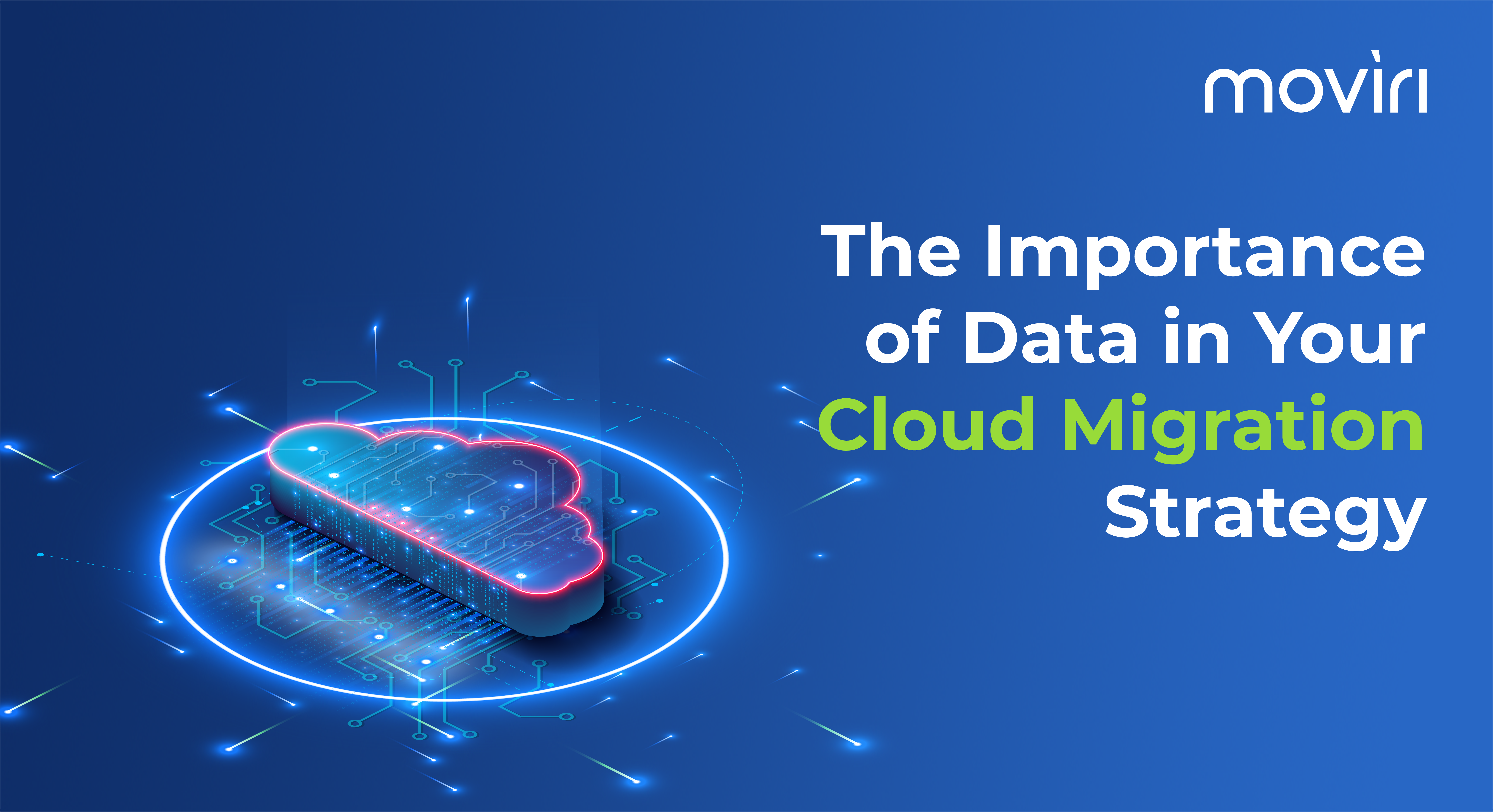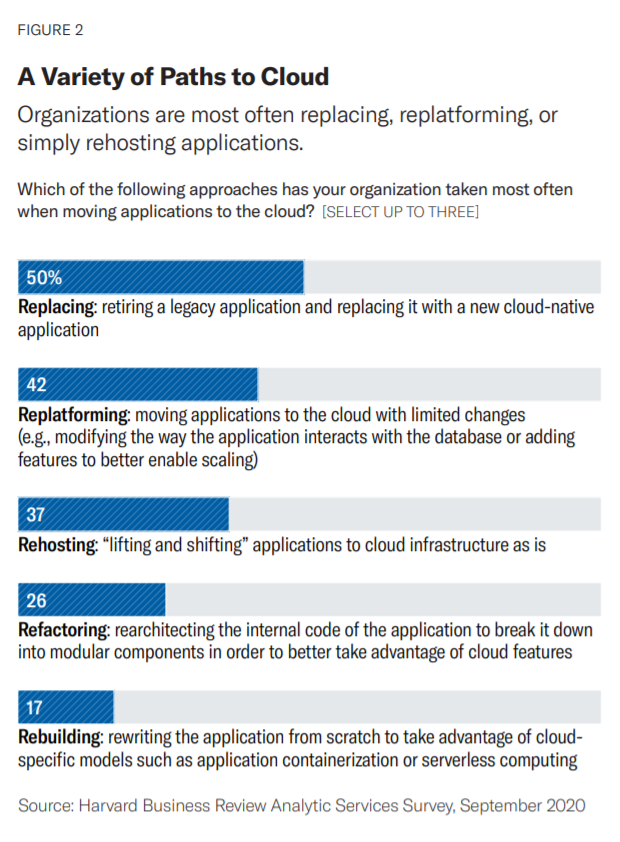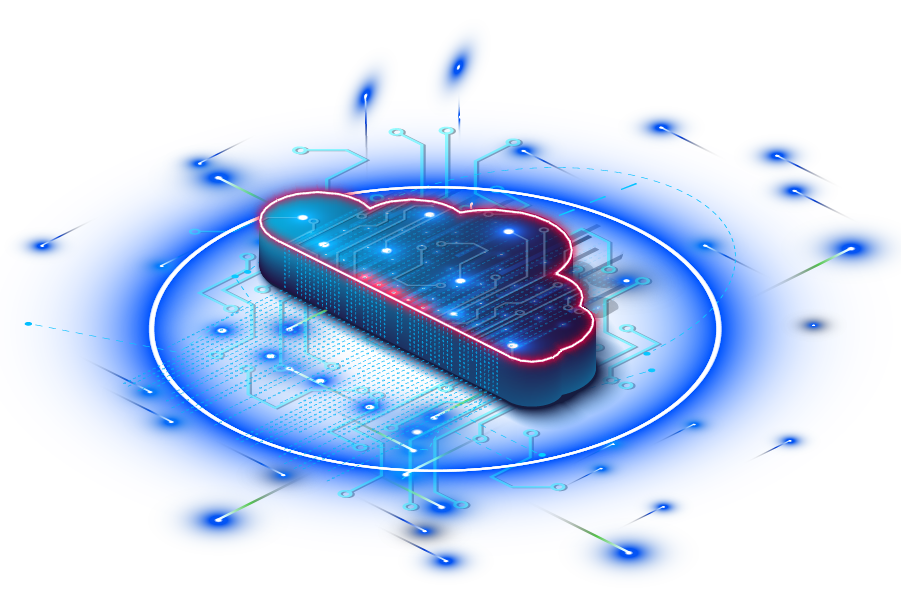27 Jul

At the end of 2020, the Harvard Business Review (HBR) published a survey on the state of the Cloud-driven transformation, highlighting the key factors that will contribute to the acceleration in the adoption of cloud technologies in the next few years.
Out of 260 respondents who have a key role in cloud adoption within their organizations, 69% say that the majority of their IT infrastructure real estate will be in the Cloud within two years.
Digital transformation (the adoption of digital technology to transform services and business) recorded increasing investment in cloud applications in response to the COVID-19 pandemic.
This expansion towards new technologies introduced more operational complexity while allowing an almost immediate back-to-work response during the lockdown. The expansion is growing from new strategies to new models like containers, to serverless computing.
In all these uncertainties, there is the how factor that should be taken into account when approaching the path to the Cloud.
Over a third (35%) of organizations have limited their approach to “application rehosting”. The lift and shift – moving the applications to cloud infrastructure as is – fails to take full advantage of cloud-native features
Nor does the replatforming – moving the applications with limited changes in order to better enable scaling – that has been chosen by the 42% of the company surveyed.
Both these strategies must be considered as temporary solutions.
In a longer-term view, only the organizations that adopt a rearchitecting approach towards the cloud will accrue the full value of the cloud investment they make.
Cost reduction and scalability, the first immediate goals that can be achieved with cloud adoption, will be soon taken for granted, while the most sophisticated organizations will build their competitive advantage upon other strategic benefits derived from their cloud investment, such as the ability to quickly adapt business models or markets because of the agility of their entire IT system.
If this has not happened yet, it is because most enterprises can’t easily build internally the extensive skill base that such transformation requires.
This transformational effort includes migrating workloads to AWS, or Microsoft Azure or Google Cloud Platform (GCP), which may not have been deployed as cloud-ready applications.
Digital infrastructures now require visibility and data-driven insights throughout very fragmented and distributed environments that include mainframe, virtualized, serverless and hybrid cloud platforms that use containers and microservices.
Splunk Cloud Platform
Cloud is a critical enabler of the digital transformation but increases complexity.
Go deeper into new technologies and strategies. If your organization is planning to migrate to the Cloud, contact Moviri’s experts.
We can help.
Cybersecurity groups must secure the posture of resources that are no longer in their full control against threats and attacks.
Cloud operations teams need a fast approach to data management that can keep up with the new pace of cloud services, allowing proactive situational analysis, deeper investigation, and faster response.
DevOps teams need to gain full-stack observability of their application and the underlying digital infrastructure.
Service and business line owners need to analyse the performance of their services before, during and after their migration to the cloud to deliver a flawless customer experience.
Analytics and advanced analyses typically suffer from siloed data, resulting in partial information on the process to be analyzed, and reducing the impact they may have.
Thanks to a reasoned and planned strategy, cloud migration favours a structured plan for data collection, easing the access to data to both machine learning algorithms and stakeholders.
There are so many things you can do with cloud when you have your data in an actionable place”
Dion Hinchcliffe
Principal Analyst, Constellation Research
Collecting data from every location is the way to monitor performance and security.
Failing to adopt a cloud data strategy, may result in struggles and unexpected slowdowns in the organizations’ use of the cloud.
Get the Cloud Migration Guide with Splunk.
Categories
- Akamas
- Analytics
- Announcements
- Arduino
- Big Data
- Capacity Management
- Cleafy
- Cloud
- Conferences
- ContentWise
- Corporate
- Cybersecurity
- Data Science
- Digital Optimization
- Digital Performance Management
- Fashion
- IoT
- IT Governance and Strategy
- IT Operations Management
- Life at Moviri
- Machine Learning
- Moviri
- News
- Operational Intelligence
- Partners
- Performance Engineering
- Performance Optimization
- Tech Tips
- Virtualization
Stay up to date

© 2022 Moviri S.p.A.
Via Schiaffino 11
20158 Milano, Italy
P. IVA IT13187610152

